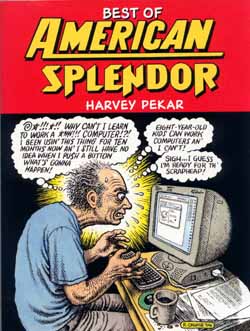 Â
Â
By Harvey Pekar and various (Titan Books)
ISBN 1-84576-096-4
Harvey Pekar is something of a conundrum. By his own reasoning and admission he is a fairly ordinary working stiff, just trying to get by. For all of his life he has had a “real job†and a “real lifeâ€. His comic scripts are introspective, and let’s be honest, not illustrated in a manner guaranteed to suck in the average comic fan, but his comics are always beguiling, intriguing and utterly readable. By telling tales and sharing thoughts he has managed to make an everyday world extraordinary.
This compilation features strips from 1990 to 2004 and is the usual, unusual mix of self-exploration, reminiscence and social trivia blended with some more of his compelling potted histories and commentaries of historically “lost†figures from literature, sports and music. This ability to impart his obvious fascination and empathy for other creators unjustly forgotten and critically downtrodden (like himself?) may simply point to personal bias. Maybe he is championing those he feels have been similarly mistreated, or does it perhaps go deeper than that?
Here is a creator inarguably obsessed with achievement and the justice of recognition, but he is not saying “Hey, look. You’re doing to me what you did to them!†Here is someone who simply perceives genuine worth that needs to be revered and shared, just doing his bit to make it right.
As for my earlier crack about the art, please don’t misunderstand. The artists are not pikers, they just aren’t cranking out your everyday fancy-dan, computer-coddled, mutant fan-boy fodder. The illustrators here include Dean Haspiel, Josh Neufeld, Joe Sacco, David Collier, Gerry Shamray, Sam Hurt, Joe Zabel, Gary Dumm, Paul Mavrides, Alex Wald, J. R. Stats, Jim Woodring, Carole Sobocinski, Scott A. Gilbert and even Spain. If you read comics broadly rather than stockpile fanatically, you will know most of these names. Hopefully you also know their other work.
The stories themselves range from slice of life single gags, to the familiar recollections and ruminations, from short yarns describing the authors’ close brushes with fame and security, to the extended and deeply moving “TransAtlantic Comics†co-pencilled and inked in two sections by Frank Stack and Colin Warneford. This gem alone is worth the price of admission. The stories set at comic conventions where Pekar was in attendance are horribly familiar and should serve as a warning to any comic collector who retains a semblance of rationality.
If graphic novels are ever to attain the critical, let alone popular acceptance of their picture-free namesakes, it is going to be because of creators like Pekar. I’m unsure of the value of a review such as this, in a venue like this one, to change the minds of notoriously close-minded comics fans, (and yes I regretfully include myself in that description) but I live in hope. Perhaps I’ve convinced you to try something a little different. To paraphrase this most extraordinary man himself, and his philosophy on Jazz, “You either get it or you don’tâ€. You should get it.
© 2005 Harvey Pekar LLC. All Rights Reserved.
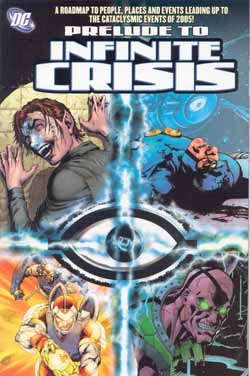 Â
 
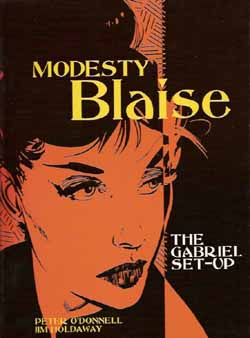 Â
 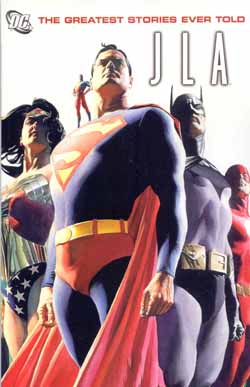 Â
 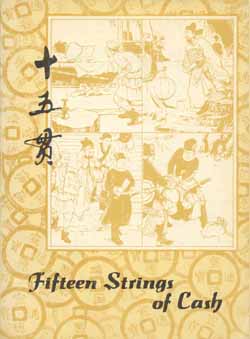 Â
 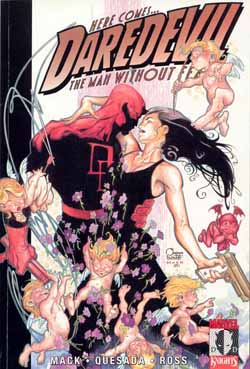 Â
  Â
 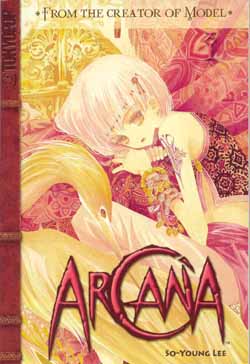 Â
 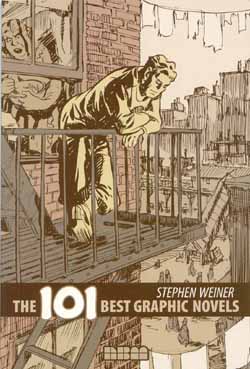 Â
 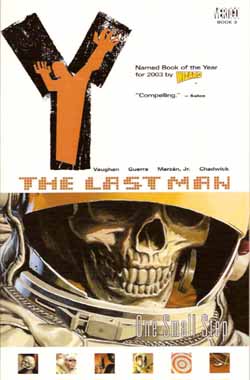
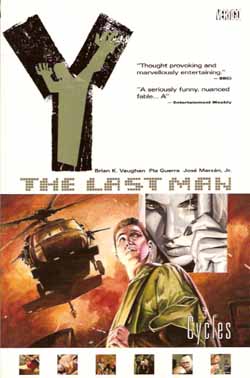 Â
Â